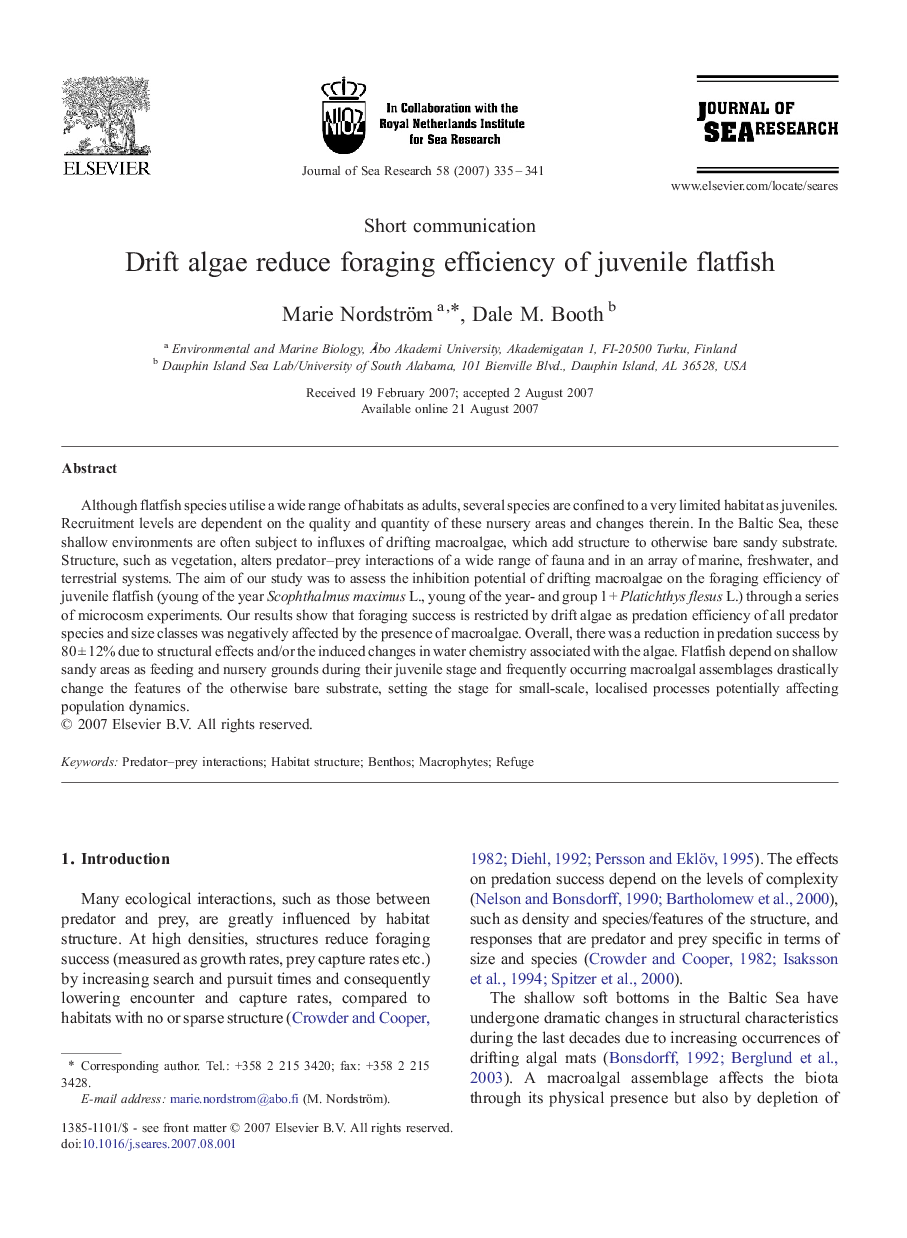| Article ID | Journal | Published Year | Pages | File Type |
|---|---|---|---|---|
| 4550440 | Journal of Sea Research | 2007 | 7 Pages |
Abstract
Although flatfish species utilise a wide range of habitats as adults, several species are confined to a very limited habitat as juveniles. Recruitment levels are dependent on the quality and quantity of these nursery areas and changes therein. In the Baltic Sea, these shallow environments are often subject to influxes of drifting macroalgae, which add structure to otherwise bare sandy substrate. Structure, such as vegetation, alters predator-prey interactions of a wide range of fauna and in an array of marine, freshwater, and terrestrial systems. The aim of our study was to assess the inhibition potential of drifting macroalgae on the foraging efficiency of juvenile flatfish (young of the year Scophthalmus maximus L., young of the year- and group 1 + Platichthys flesus L.) through a series of microcosm experiments. Our results show that foraging success is restricted by drift algae as predation efficiency of all predator species and size classes was negatively affected by the presence of macroalgae. Overall, there was a reduction in predation success by 80 ± 12% due to structural effects and/or the induced changes in water chemistry associated with the algae. Flatfish depend on shallow sandy areas as feeding and nursery grounds during their juvenile stage and frequently occurring macroalgal assemblages drastically change the features of the otherwise bare substrate, setting the stage for small-scale, localised processes potentially affecting population dynamics.
Related Topics
Physical Sciences and Engineering
Earth and Planetary Sciences
Oceanography
Authors
Marie Nordström, Dale M. Booth,
